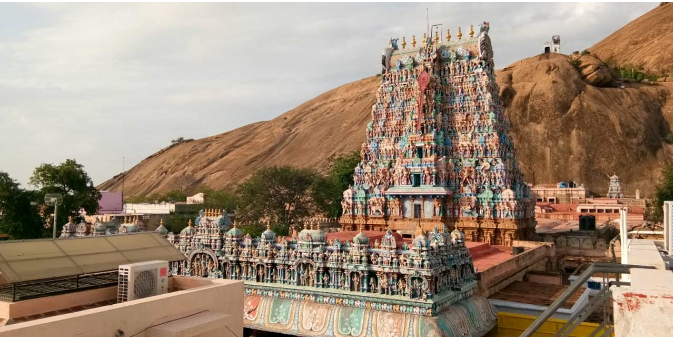In Madura, Tirupparankundram v Alikhan Sahib[1], an entire hill, as a place of public worship, was recognised as a juristic person on the basis of the circumambulation performed around it.
The Privy Council in Madura Tirupparankundram was concerned with the ownership of a barren hill in the Madura District of Madras. There was a mosque at the highest point of the hill. The Tirupparankundram Temple, represented by its manager, instituted a suit claiming the whole hill as temple property (with the exception of certain cultivated and assessed lands and the site of the mosque).
The Mohammedan defendants asserted ownership over the mosque and a portion of the hill known as Nellitope. The Secretary of State claimed to be the owner of all unoccupied portions of the hill. The Subordinate judge of Madura decreed in favour of the Plaintiffs (with the exception of the Nellitope, the mosque itself and the flights of stairs leading to it).
The Mohammedan defendants filed an appeal and the Secretary of State was directed to be a party to the appeal. Despite a finding that the Hindus and Mohammedans had rights over the hill, and without specifying what these rights were, the High Court held that the Government was the owner of the hill. Around the base of the hill, worshippers performed the Pradakshinan by a circumambulation of the hill. This path was also used for processions with the temple car and was known as Ghiri Veedhi.
While the judgment of the High Court noted evidence on record that the hill as a whole was worshipped by the Hindu community as a Linga, the question at the heart of the dispute concerned the question of ownership over the unoccupied portions of the hill within the Ghiri Veedhi. Under Lord Clive‘s treaty with Azim-ul-Dowlah in 1801, Madura came under the control of the East India Company. The High Court took the view that, post 1801 the entire hill, being part of the village, became Government property.
The Privy Council held that acts of ownership had been exercised consistently by the temple for the greater part of a century over all unoccupied portions of the land. Expenses were also incurred for the upkeep of smaller shrines situated within the Ghiri Veedhi. The temple was held to have been in possession of the unoccupied portion of the hill from time immemorial which had been treated by the temple as temple property.
The Privy Council held that, save and except the mosque, there was “no evidence of expropriation from the remainder” of the hill. Sir George Lowndes held:
“The only rights which the temple can assert against the respondent are rights which the East India Company granted to them or allowed them to retain…and their Lordships think the evidence shows that the temple was left after 1801 in undisturbed possession of all that it now claims…
Their Lordships do not doubt that there is a general presumption that waste lands are the property of the Crown, but they think that it is not applicable to the facts of the present case where the alleged waste is, at all events physically, within a temple enclosure…
On the whole their Lordships are of opinion that the appellant has shown that the unoccupied portion of the hill has been in the possession of the temple from time immemorial and has been treated by the temple authorities as their property.”
A close reading of the judgment makes it evident that the Privy Council was only concerned with
(i) the unoccupied portions of the land and the protection of other proprietary rights in the hill; and
(ii) the ownership of the property by the temple.
There is a distinction between the ownership of the property by the temple, and the conferral of legal personality on land. Where land is owned by a person, it cannot be a juristic person, for no person can own a deity as a juristic person.
[1] (1931) 61 Mad LJ 285
